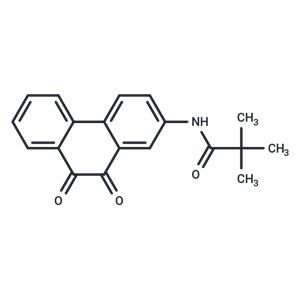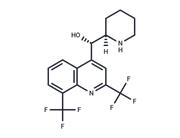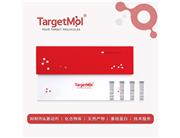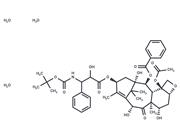| Name | SF1670 |
| Description | SF1670 (PTPase CD45 Inhibitor) is a specific PTEN inhibitor with IC50 of 2 μM. |
| Cell Research | Cells are plated into 96-well plates in RPMI 1640 medium supplemented with 10% FBS and incubated overnight at 37°C. in an incubator containing an atmosphere of 5% CO2. The following day, the medium is replaced and cells are starved by placing in 100 uL of serum-free medium for 3 hours. Serially diluted test compounds are added to the wells and incubated with the cells for 2 hours at 37°C. Compounds are tested in a range from 1 mM to 0.1 nM depending on solubility. MTT is added to the wells at a final concentration of 5 μg/ml and incubated with the cells for 3 more hours. At the end of the incubation, the medium is aspirated and the MTT stain in the cells is dissolved by the addition of 100 μL DMSO. Optical density of each well is then measured at 570 nm using a SpectroMax Plus spectrophotometric plate reader. The IC50 determination from the data was made using Prism software.(Only for Reference) |
| Kinase Assay | PTEN Inhibition Assay: To determine the dose response of potential PTEN inhibitors, doses of test compounds ranging from 1 nM to 250 uM (final reaction mix concentrations) are evaluated in the general PTEN inhibition assay. To obtain performed IC50 data, two separate rounds of the dose response assay are performed. In the first round, PTEN activity is tested in the presence of inhibitor at 10 fold serial dilutions ranging from 1 nM to 250 uM. Once the concentration range is determined, at which PTEN activity changes dramatically, two additional concentration data points within this range are added and the PTEN inhibition assay is then rerun for the second round. The PTEN inhibition IC50 is presented as the inhibitor concentration at which 50% of the PTEN activity. When the assay was run on multiple occasions and gave slightly different IC50 then those are reported as a range of IC50 found. |
| In vitro | SF1670 shows potent cytotoxicity in HBEC, PC-3, H1299 cells with IC50 of 5 μM, 10 μM, 44 μM, respectively. In a mouse aortic ring matrigel angiogenesis model, SF1670 stimulates the angiogenic processes. [1] SF1670 augments chemoattractant-elicited PtdIns(3,4,5)P3 signaling in neutrophils and enhances neutrophil functions. [2] |
| In vivo | Pretreatment of SF1670 (500 nM i.v.) augments bacteria-killing capability in neutropenic mice in both peritonitis and bacterial pneumonia, and decreases the mortality of neutropenia-related pneumonia. [2] |
| Storage | Powder: -20°C for 3 years | In solvent: -80°C for 1 year | Shipping with blue ice. |
| Solubility Information | DMSO : 30.7 mg/mL (100 mM)
|
| Keywords | SF1670 | SF 1670 | inhibit | Autophagy | MMAC1 | Inhibitor | Phosphatase and tensin homolog | SF-1670 | Phosphatase | PTEN |
| Inhibitors Related | Stavudine | Xylitol | Sodium 4-phenylbutyrate | Hydroxychloroquine | Guanidine hydrochloride | Taurine | Curcumin | Oxyresveratrol | Paeonol | Stearic acid | Naringin | Gefitinib |
| Related Compound Libraries | PI3K-AKT-mTOR Compound Library | Anti-Lung Cancer Compound Library | Bioactive Compound Library | Anti-Ovarian Cancer Compound Library | Inhibitor Library | Anti-Aging Compound Library | Bioactive Compounds Library Max | Anti-Cancer Compound Library | Phosphatase Inhibitor Library | Oxidation-Reduction Compound Library |

 United States
United States



